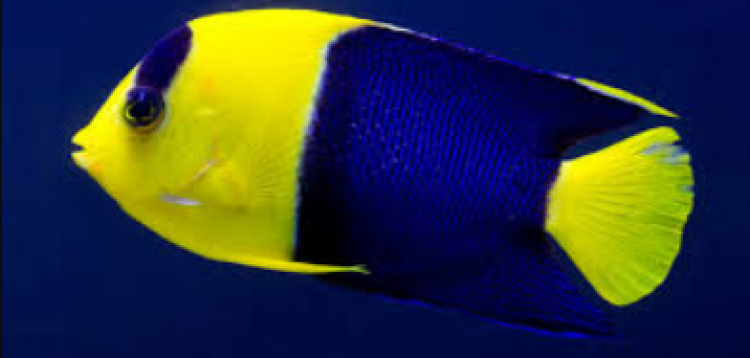- Name:
Sixbar angelfish
(View AKA's) - Family: Pomacanthidae
- Species: Angel Large
- Scientific Name: Pomacanthus sexstriatus

More Details
General info about Sixbar angelfish
The Sixbar angelfish, scientifically known as Pomacanthus sexstriatus, is a beautiful and popular marine aquarium fish. This species is native to the tropical Western Pacific Ocean, particularly in the Coral Triangle region. They can grow up to 15 inches (38 cm) in length and are generally considered a peaceful fish, but can be aggressive towards other fish of similar size and appearance. Due to their size and active swimming behavior, they require a larger tank of at least 150 gallons with plenty of hiding spots and live rock for grazing.
Sixbar angelfish Diet & Nutrition
In the wild, Sixbar angelfish feed on a varied diet of algae, sponges, and invertebrates such as crustaceans, mollusks, and worms. In captivity, they should be offered a varied diet that includes a mix of high-quality marine pellets, frozen or live foods such as brine shrimp, krill, mysis shrimp, and spirulina. It is important to feed them small amounts several times a day to avoid overfeeding and potential health issues.
Determining Sex of Sixbar angelfish
It is difficult to distinguish between male and female Sixbar angelfish as they do not have any external sexual characteristics.
Breeding & Spawning Sixbar angelfish
Sixbar angelfish are not commonly bred in captivity, but some success has been reported. They are hermaphroditic, starting out as females and later changing to males. Breeding is challenging due to their aggressive nature and the need for a large tank with live rock and hiding spots. When spawning does occur, the fertilized eggs hatch within a day and the larvae are planktonic, requiring special food and care.
Common Diseases with Sixbar angelfish
Like all marine fish, Sixbar angelfish are susceptible to a range of diseases such as ich, marine velvet, and fin rot. It is important to maintain good water quality and provide a balanced diet to prevent illness. Quarantining new fish before introducing them to the main tank can also help prevent the spread of disease.
Sixbar angelfish Origin
The Sixbar angelfish is native to the Western Pacific Ocean, including the Great Barrier Reef, Indonesia, and the Philippines.
Caution with Sixbar angelfish
Sixbar angelfish are generally peaceful, but can become aggressive towards other fish of similar size and appearance. They are also known to nip at stony and soft corals, so caution should be taken when selecting tank mates and décor.
Acclimating Sixbar angelfish
When introducing a Sixbar angelfish to a new aquarium, it is important to acclimate them slowly to avoid shock and stress. This can be done by floating the bag in the aquarium for 30 minutes to allow the temperature to equalize, and then gradually adding small amounts of aquarium water to the bag over the course of an hour or two. Once fully acclimated, gently release the fish into the tank.
Relevent Articles
Original Detail
| Name | Species | Family | Scientific Name | More Detail | Added by |
|---|---|---|---|---|---|
| Sixbar angelfish | Angel Large | Pomacanthidae | Pomacanthus sexstriatus | The Sixbar angelfish, scientifically known as Pomacanthus sexstriatus, is a beautiful and popular marine aquarium fish. This species is native to the tropical Western Pacific Ocean, particularly in the Coral Triangle region. They can grow up to 15 inches (38 cm) in length and are generally considered a peaceful fish, but can be aggressive towards other fish of similar size and appearance. Due to their size and active swimming behavior, they require a larger tank of at least 150 gallons with plenty of hiding spots and live rock for grazing. | PalaciosAn |
Changed by users
| Submitted Date | Submitted By | Status | Action |
|---|


